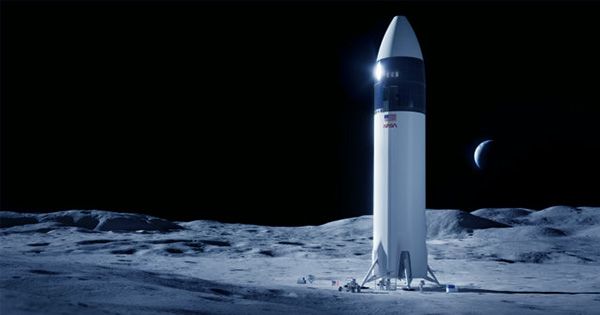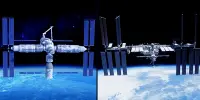After failing to launch on NASA’s Artemis 1 mission, the privately developed Hakuto-R lunar lander and the small briefcase-sized CubeSat known as Lunar Flashlight are sharing a ride to space on a SpaceX Falcon 9 rocket. This could revolutionize the search for water ice on the moon.
The Hakuto-R moon lander developed by the Japanese company ispace will launch from the Falcon 9 rocket about seven minutes after the 31-pound (14-kilogram) CubeSat. The CubeSat will then use its own small propulsion system to maneuver into an oval-shaped, nearly rectilinear halo orbit that, at its closest approach, skims just 9 miles (15 kilometers) from the moon’s south pole.
After flying a fuel-efficient, low-energy transfer that takes it well beyond the moon, Lunar Flashlight will take nearly four months to reach its science orbit before lunar gravity helps trap the spacecraft into orbit early next year.

The Jet Propulsion Laboratory’s Lunar Flashlight mission will orbit the moon and use infrared lasers to illuminate permanently hidden craters close to the lunar poles. The composition and quantity of water ice and other molecules concealed on the shadowy crater floors will be made known by a sensor on Lunar Flashlight that measures the light reflected off the lunar surface.
“It is ambitious for a tiny spacecraft,” said Barbara Cohen, Lunar Flashlight’s principal investigator from NASA’s Goddard Space Flight Center. “What we are doing is we are using four infrared lasers in different infrared wavelengths to search for definitive markers of water ice. We use the laser to shine onto the surface of the moon. At certain wavelengths, ice will absorb those wavelengths but rock or regolith will reflect them.”
Based on how much of the laser light reflects off the permanently dark floors of the polar craters, researchers will be able to identify the existence of water ice and get an idea of how much of it there is. Reflected sunlight is used by other missions to look for evidence of water.
“You have to bring your own illumination if the sun isn’t shining in permanently shaded craters, and that’s what Lunar Flashlight is doing,” Cohen said.
Other missions have discovered signs of subsurface ice as well as crater floor water ice deposits. Lunar Flashlight will make an effort to verify whether there is ice on the surface. Future astronauts might have access to surface ice formations to help make drinking water and rocket propellant.
Previously, Lunar Flashlight was scheduled to take off from the first stage of NASA’s massive Space Launch System moon rocket. Lunar Flashlight was one of 13 CubeSat missions chosen by NASA to go on the first SLS flight, known as Artemis 1.
One of the three CubeSat missions that were unable to be mounted aboard the SLS moon rocket before it was shut down for the Artemis 1 test launch was Lunar Flashlight.
Last year, a NASA representative claimed that problems with the Lunar Flashlight spacecraft’s initial propulsion system compelled designers to use a different approach. Due to the COVID-19 pandemic’s impacts and the prolonged mission development, the spacecraft was not ready for integration with the Artemis 1 rocket.
The Cislunar Explorers mission, which consisted of a pair of CubeSats from Cornell University, and the CU-E3 mission from the University of Colorado, Boulder, were the other two CubeSat projects that failed to meet the deadline for the Artemis 1 satellite.
Either has a new launch opportunity as of this summer.
Lunar Flashlight was tasked with launching on a SpaceX rocket alongside a commercial lunar lander owned by the Houston-based Intuitive Machines after missing its ride on Artemis 1. Due to the Intuitive Machines lander’s development taking longer than expected, NASA was able to move Lunar Flashlight to the Hakuto-R mission, delaying its flight until 2023.
According to Cohen, Lunar Flashlight’s status was better than it would have been if it had taken off on Artemis 1. From the moment they were integrated on the launcher in 2021 until the launch a year later, some of the CubeSat rideshare payloads on the Artemis 1 moon rocket were unable to recharge their batteries.
“We are in a little bit better situation because we are fully charged, and we didn’t have to sit on the pad for a year,” Cohen said.
















